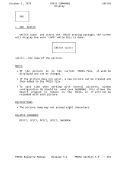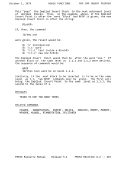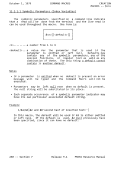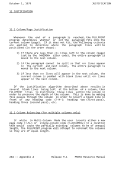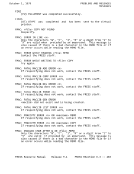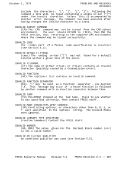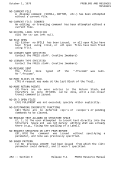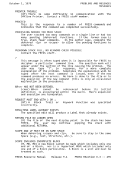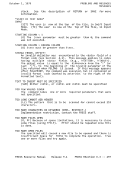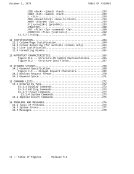October 1, 1979 JUSTIFICATION
12.3 Line Justification _______________________
There are four modes of line justification set by the !+JUST+
code (see Section 4.3):
fully justified 0) ________________ (the default)--blanks are inserted into
the line until the text is flush with both the left and
right margin. A blank is inserted only where another
blank already exists in the line. If the existing blank
is underscored, the inserted blank will also be
underscored.
bell 1) ____--the text on each line is centered between the
margins; no blanks are inserted.
flush left 2) ___________--the text appears flush left, i.e., with a
ragged right margin; no blanks are inserted.
flush right 3) ____________--the text appears flush right, i.e., with a
ragged left margin; no blanks are inserted.
12.4 Formatting Blanks ______________________
It is grammatically proper to leave two blanks after each end
of sentence period. The FULLPRINT program deletes extra blanks
two (more than one between words, more than ___ after punctuation)
from the printout during all line justification.
Special Blank Blank Fill The "not" sign ("¬") is the ______________ or __________
(non-justifiable blank) character. During FULLPRINT the "¬" is
translated to a blank but is regarded as a text character by the
line justification algorithm.
Consider the following indentation/ hanging indentation
situation:
1) This is text where the user wants the following lines
to begin flush with the first character in the first
line.
If the justification were L0, the chances are that an
additional blank would be inserted between the ")" and the "T"
in the first line, thus throwing the alignment off. By
changing the intervening blank into a special blank, "1)¬This"
is treated as a single word (with the "¬" translated to a
single blank on output only), and hence no additional space
will be inserted.
FRESS Resource Manual Release 9.1 FRESAppendix A.4 -- 265
12.3 Line Justification _______________________
There are four modes of line justification set by the !+JUST+
code (see Section 4.3):
fully justified 0) ________________ (the default)--blanks are inserted into
the line until the text is flush with both the left and
right margin. A blank is inserted only where another
blank already exists in the line. If the existing blank
is underscored, the inserted blank will also be
underscored.
bell 1) ____--the text on each line is centered between the
margins; no blanks are inserted.
flush left 2) ___________--the text appears flush left, i.e., with a
ragged right margin; no blanks are inserted.
flush right 3) ____________--the text appears flush right, i.e., with a
ragged left margin; no blanks are inserted.
12.4 Formatting Blanks ______________________
It is grammatically proper to leave two blanks after each end
of sentence period. The FULLPRINT program deletes extra blanks
two (more than one between words, more than ___ after punctuation)
from the printout during all line justification.
Special Blank Blank Fill The "not" sign ("¬") is the ______________ or __________
(non-justifiable blank) character. During FULLPRINT the "¬" is
translated to a blank but is regarded as a text character by the
line justification algorithm.
Consider the following indentation/ hanging indentation
situation:
1) This is text where the user wants the following lines
to begin flush with the first character in the first
line.
If the justification were L0, the chances are that an
additional blank would be inserted between the ")" and the "T"
in the first line, thus throwing the alignment off. By
changing the intervening blank into a special blank, "1)¬This"
is treated as a single word (with the "¬" translated to a
single blank on output only), and hence no additional space
will be inserted.
FRESS Resource Manual Release 9.1 FRESAppendix A.4 -- 265










































































































































































































































































